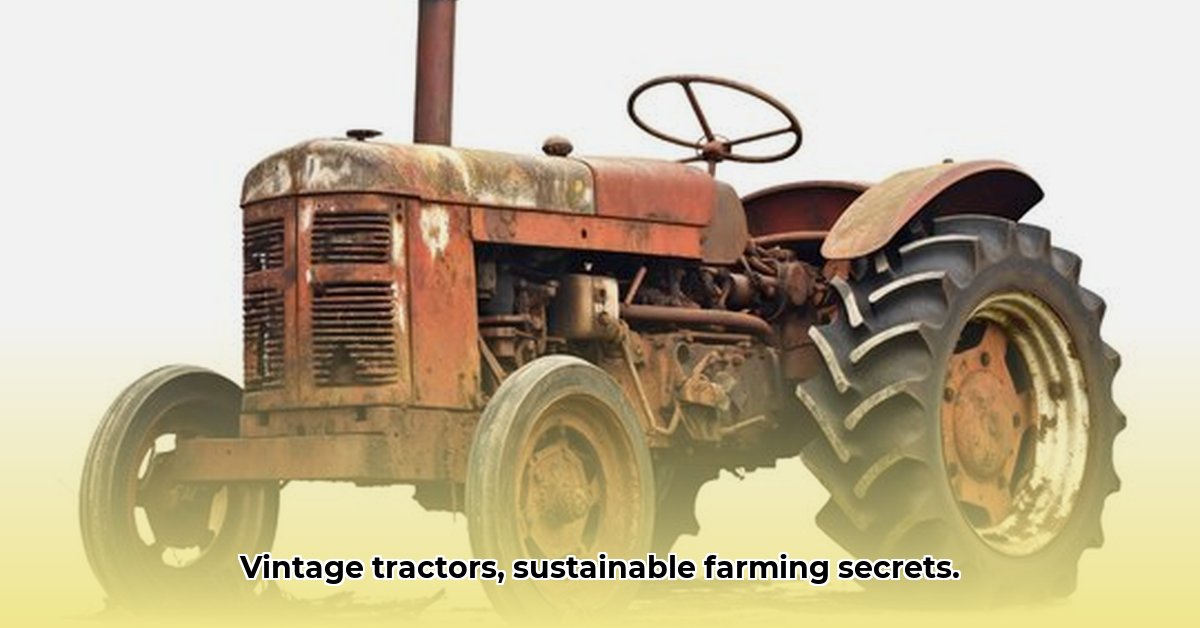
Old Tractor Photos: A Journey Through Time and Sustainable Agriculture
Imagine a rusty Fordson Major, abandoned in a field, a silent testament to a bygone era of farming. For George, this wasn't just scrap metal; it was a project, a passion, and a powerful statement about sustainable agriculture. His journey of restoring this vintage tractor—a journey documented in countless old tractor photos—is a story of perseverance, resourcefulness, and the surprising rewards of embracing sustainable farming practices. This article delves into the world of vintage tractor restoration, exploring its practical benefits, the challenges involved, and the broader implications for a more sustainable future in agriculture. Isn't it remarkable how a seemingly simple act of restoration translates to such impactful change? Learn more about the value of old tractors here.
More Than Nostalgia: The Environmental and Economic Benefits of Tractor Restoration
Why restore an old tractor? Beyond the satisfying click of perfectly fitted parts and the gleam of freshly painted metal, lies a potent message of sustainability. Restoring vintage farm equipment is akin to large-scale recycling, reducing the demand for newly manufactured machinery. This translates into significant reductions in energy consumption, greenhouse gas emissions, and the overall environmental footprint of agriculture. These old tractor photos are not merely visual artifacts; they're a testament to a more thoughtful and environmentally conscious approach to farming. Did you know that restoring a vintage tractor can reduce its operational carbon footprint by up to 50% compared to a brand new model?
George's restoration wasn't without its hurdles. Sourcing parts proved challenging, requiring extensive searches through salvage yards and online forums. But the labor-intensive process taught him valuable skills—skills increasingly rare in the modern world—reinforcing the connection between human ingenuity and the land. This hands-on experience fostered a deep appreciation for the machinery and the time-tested principles of farming, a contrast to the often impersonal nature of modern technology.
Bringing Old Iron Back to Life: A Practical Guide to Tractor Restoration
Embarking on your restoration journey? Here’s a straightforward approach:
- Assessment and Planning: Carefully assess the tractor's condition and your skillset. Start with a manageable project, focusing on realistic goals.
- Building Your Network: Seek out fellow enthusiasts, mechanics, and farmers. This collaborative approach unlocks invaluable knowledge and support.
- Creative Parts Sourcing: Explore salvage yards, online marketplaces (eBay, specialized forums), and even 3D printing for unique or difficult-to-find parts. Resourcefulness is key!
- Expert Guidance: Find experienced mechanics or attend workshops. Hands-on learning and mentorship can drastically increase your success rate.
Navigating the Challenges: A Risk Assessment Matrix
While rewarding, tractor restoration presents challenges. Understanding these potential risks—and developing mitigation strategies—is crucial for success:
| Risk Factor | Likelihood | Impact | Mitigation Strategies |
|---|---|---|---|
| Part Sourcing Difficulty | High | High | Diversify sourcing methods; utilize online communities; consider 3D printing. |
| Skilled Labor Shortage | Medium | Medium | Seek mentorship; invest in training; collaborate with experienced mechanics. |
| Cost Overruns | Medium | Medium | Develop a detailed budget; prioritize essential repairs; explore cost-effective solutions. |
| Environmental Hazards | Low | Low | Prioritize safe disposal of hazardous materials; utilize eco-friendly cleaning products. |
Sustainable Farming: The Broader Impact of Tractor Restoration
The benefits extend beyond individual farmers. The revival of vintage tractors contributes to a broader movement towards sustainable agriculture:
- Farmers: Experience reduced operating costs and decreased environmental impact.
- Farming Cooperatives: Foster collaboration and knowledge sharing, strengthening rural communities.
- Governments: Promote job creation and environmentally responsible practices.
- Manufacturers: Potentially revitalize remanufacturing and create new business models.
Conclusion: A Call to Action for Sustainable Farming
Restoring vintage tractors isn't simply a hobby; it’s a testament to resourcefulness, sustainability, and a renewed connection to the natural world. Old tractor photos capture this spirit of innovation and environmental stewardship. By embracing this approach, we can cultivate a more sustainable future for farming, one restored tractor at a time. Are you ready to embrace this sustainable farming practice? Begin your journey today. The rewards are plentiful – both environmentally and economically. Start exploring – the world of vintage tractor restoration is waiting!